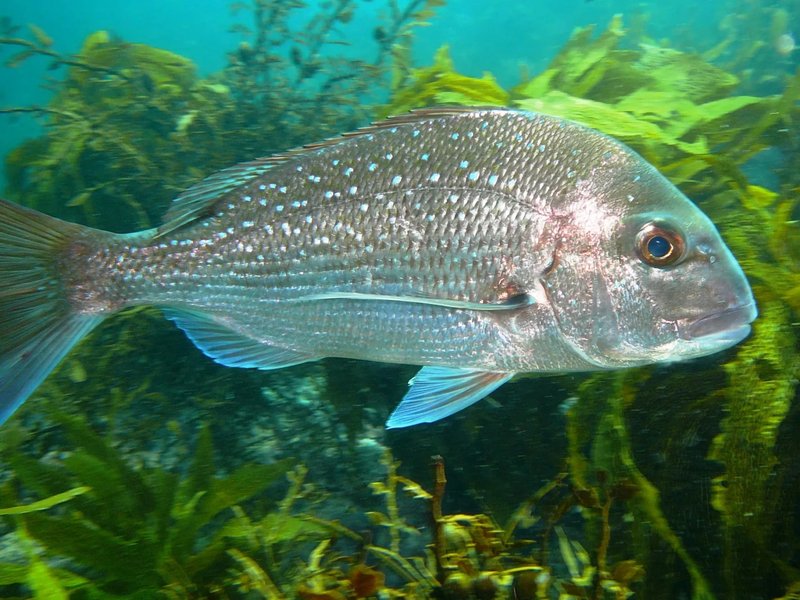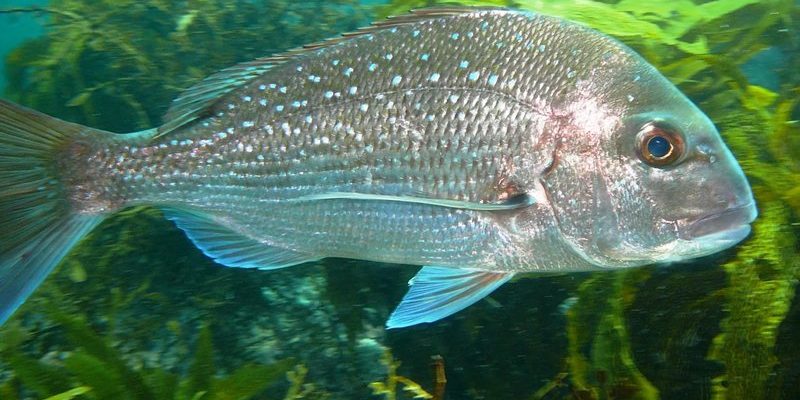
Imagine walking through a vast underwater city. The buildings are coral reefs, and the bustling streets are swarming with colorful fish. Among them, you’ll find snappers darting through the water, hunting for their next meal. But these fish aren’t just ocean-dwellers; they can also be spotted in other watery locales. Curious about where to look? Let’s uncover the secrets of their habitats.
Oceans: The Primary Habitat of Snappers
Snappers are mainly found in tropical and subtropical oceans around the world. They thrive in warm waters, typically ranging from 68°F to 85°F. These fish prefer to hang out near coral reefs, rocky bottoms, and even sandy patches where they can find their favorite meals—small fish, crustaceans, and mollusks.
One of the most famous snapper species is the red snapper, known for its mild flavor and vibrant red color. You’ll often find them in the Gulf of Mexico and the Caribbean Sea. These snappers love structure, so you might see them near underwater mountains or cliffs. If you’re ever diving or snorkeling in these areas, keep your eyes peeled for these beauties!
Another interesting spot for snappers is the Hawaiian Islands, where several species, like the ta’ape, can be found. Fishing enthusiasts flock to these spots not just for the catch but also for the beautiful scenery. Honestly, who wouldn’t want to reel in a colorful snapper while surrounded by breathtaking ocean views?
Coral Reefs: A Snapper Sanctuary
Coral reefs are like underwater jungles—rich in biodiversity and full of life. These ecosystems are home to many snapper species, offering them shelter and hunting grounds. The structure of the coral provides hiding spots for smaller fish, making it an ideal hunting environment for snappers.
Snappers are often seen in schools around the reefs. They use the coral’s nooks and crannies to ambush their prey. This hunting strategy isn’t just effective; it’s a survival tactic that keeps them thriving among fierce predators.
If you think about snorkeling at a coral reef, you might witness this action firsthand. Watching a school of snappers weave in and out of the coral can be mesmerizing. It’s a beautiful reminder of how interconnected life is in these vibrant underwater worlds!
Rivers and Estuaries: The Unlikely Homes of Snappers
Though snappers are primarily ocean dwellers, some species have adapted to living in brackish waters where rivers meet the sea. This means you might find them in estuaries—those dynamic areas where fresh and saltwater mix. Such habitats offer a unique environment for snappers, filled with nutrients and diverse prey.
One example of a snapper that inhabits these areas is the mangrove snapper. As the name suggests, they love to lurk around mangrove trees, using their roots as a home base for hunting. Mangroves are crucial for many fish species, providing shelter and spawning grounds. If you ever explore these estuarine systems, keep an eye out for these adaptable fish!
Adventurous anglers often visit river mouths and coastal lagoons, hoping to catch snappers in action. The thrill of reeling in a fish from such a unique habitat is an experience like no other. Here’s the thing: it’s not just about fishing; it’s about connecting with nature in its many forms.
Coastal Areas: The Shallow Waters
Another essential habitat for snappers includes coastal waters, especially in shallow regions. These areas are where young snappers often grow before venturing into deeper waters. The sandy bottoms and seagrass beds found in these locations serve as nursery grounds for juvenile snappers, providing both safety and abundant food sources.
You might be wondering why these shallow waters are so vital. For starters, they’re teeming with life! Small crustaceans, shrimp, and other fish abound here, making it an easy buffet for hungry young snappers. This rich ecosystem helps them grow strong and prepares them for the challenges of deeper waters.
Coastal fishing is also popular among locals. Many fishing charters focus on these productive areas, where families can enjoy a day on the water while learning about these fascinating fish. It’s a great way to introduce kids to marine life and instill a love for the ocean in the next generation.
Impact of Climate Change on Snapper Habitats
As we explore where snappers are found, it’s essential to address the challenges they face due to climate change. Rising ocean temperatures, coastal erosion, and habitat loss significantly impact their populations. Coral reefs are particularly vulnerable, as even slight temperature changes can lead to coral bleaching, which disrupts the entire ecosystem.
The increasing acidity of oceans also affects the creatures that snappers rely on for food. Crustaceans and other marine life are struggling, which means snappers have to work harder to find their next meal. It’s a domino effect that can lead to declines in snapper populations if not addressed.
Conservation efforts are crucial in protecting these habitats. Supporting sustainable fishing practices and taking part in coastal clean-up initiatives can make a difference. By taking small steps to help the environment, we can ensure that future generations get to enjoy the beauty and wonder of snappers in their natural habitats.
It’s clear that snappers are not just simple fish; they are a vital part of various ecosystems. From the depths of the ocean to the shallow coastal waters, their habitats are diverse and essential. Understanding where they are found enriches our appreciation of these beautiful creatures.
When we think about snappers, let’s remember the intricate balance of their environments. It’s not just about where they live but also about how we can protect their homes for the future. So, the next time you’re at the beach or enjoying some fish for dinner, take a moment to think about these fascinating fish and the worlds they inhabit.

